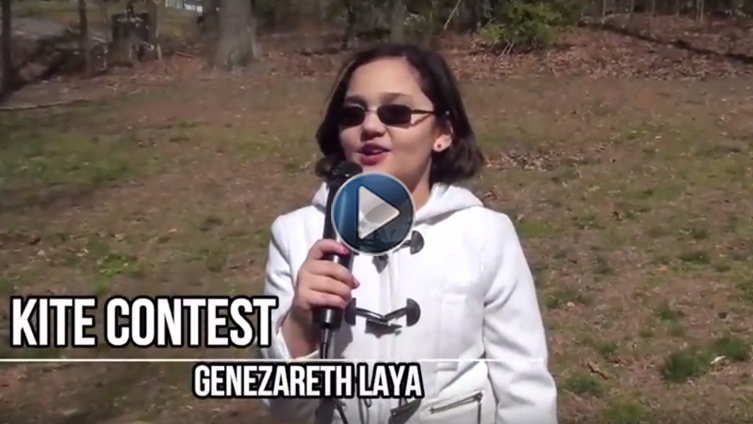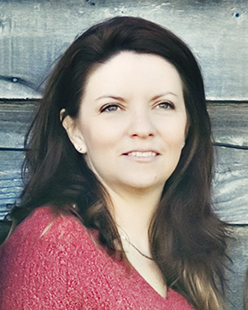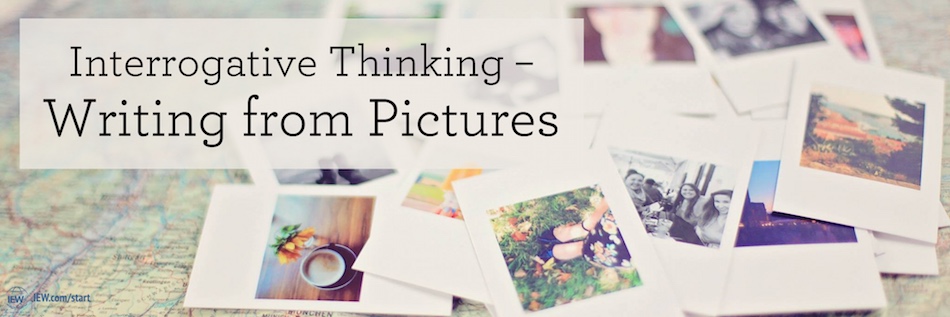
When I first heard the phrase interrogative thinking, I was immediately drawn to follow this idea. What an interesting combination of words. Of course we want our children to think clearly, quickly, carefully, and even purposefully. But how can we teach them to think interrogatively? I love teaching IEW’s Unit Five—Writing from Pictures—because it encourages this.
Writing from Pictures allows the students to finally use some creative yet interrogative thinking! Instead of a print source, the students may be given a newspaper photo, a facsimile of a Rembrandt, a series of three simple cartoons or sketches, or maybe an old photo from the 1800s. The options are truly endless. They can then use the model on Unit 5: Writing from Pictures to give purpose to their musings by using interrogative thinking. This is exactly what a detective, a lawyer, a reporter, and many others do every day. Each of them must look at a situation or an event and think interrogatively to make sense of what they see.
For instance, imagine a detective arriving at a crime scene. He is careful not to touch anything as he stands and surveys the room, looking very carefully at what can be seen. Perhaps he sees a knocked-over plant on the floor  with a shoe print in the dirt, pictures askew on the walls with shards of broken glass beneath them, a chair lying on its side, and a broken window.
with a shoe print in the dirt, pictures askew on the walls with shards of broken glass beneath them, a chair lying on its side, and a broken window.
Imagine the detective pulling out his little notebook and jotting down his own observations.
Next, he proceeds to think interrogatively by asking questions and thinking of different possible answers. Is the glass from the broken window inside the room or outside on the porch? Inside—so the perpetrator must have entered there. How far into the room is the window glass? Not far—so he must have used his elbow or something small to break it. Which direction is the shoe print in the dirt facing? How big is the shoe print? What kind of shoe or boot might it be? All of these questions are helping the detective describe what may have happened during this event.
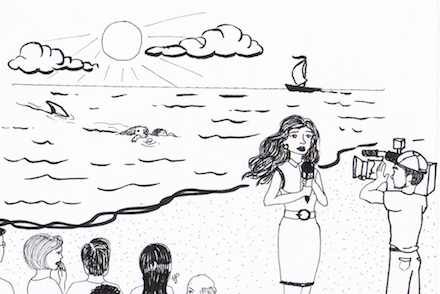 The same could be said for a news reporter. She hears about a breaking news event and rushes out with her cameraman. At first all she can do is describe what she is seeing, which is a dog swimming to shore with something held in its mouth, and there are mobs of people watching him. To begin her news coverage of this event, she simply describes her observations to the viewers at home as she speaks into the microphone. From there it is all conjecture, based on her interrogative thinking. The camera is rolling. She must say something. Questions pop into her mind. Interrogative thinking goes into action. What kind of dog is it? How far out into the water is he? What appears to be in his mouth? Why are so many people already gathered? Where did they come from? What seems to be following behind the dog? Why is nobody going into the water to help?
The same could be said for a news reporter. She hears about a breaking news event and rushes out with her cameraman. At first all she can do is describe what she is seeing, which is a dog swimming to shore with something held in its mouth, and there are mobs of people watching him. To begin her news coverage of this event, she simply describes her observations to the viewers at home as she speaks into the microphone. From there it is all conjecture, based on her interrogative thinking. The camera is rolling. She must say something. Questions pop into her mind. Interrogative thinking goes into action. What kind of dog is it? How far out into the water is he? What appears to be in his mouth? Why are so many people already gathered? Where did they come from? What seems to be following behind the dog? Why is nobody going into the water to help?
As her questions become answers, she and her viewers realize the dog has grabbed the arm of a young boy in his mouth and is bravely bringing the boy back to the beach and safety. The child had apparently swum too far out and was going under. The dog had jumped in to help the boy. Why did the people not do the same? Likely it was because of the shark fin that was circling curiously close by. She ends her broadcast by repeating the details she observed when she arrived. “James was saved by this heroic and brave Dalmatian, who swam out and pulled the small boy back to shore by his little arm.”
This year I taught a class of 8‒10 year olds who had not previously had any IEW experience. 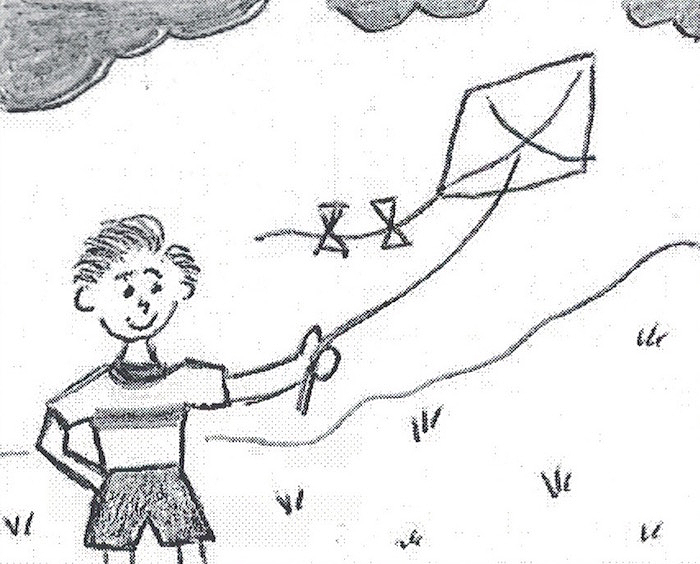 We were enjoying All Things Fun and Fascinating, and I knew Unit 5 was coming up. When it did, we began by looking at one of the three pictures in Lesson 15. The event in the first picture is a boy flying a kite in a meadow with some clouds overhead.
We were enjoying All Things Fun and Fascinating, and I knew Unit 5 was coming up. When it did, we began by looking at one of the three pictures in Lesson 15. The event in the first picture is a boy flying a kite in a meadow with some clouds overhead.
Imagining we were newspaper reporters covering this event, we described what we saw in the picture and put those key words on the first line. We then began our interrogative thinking, putting our answers into an outline. Excitedly each student thought of many questions. How long had he been training for this kite-flying contest? Where did he get the kite? How much did it cost? 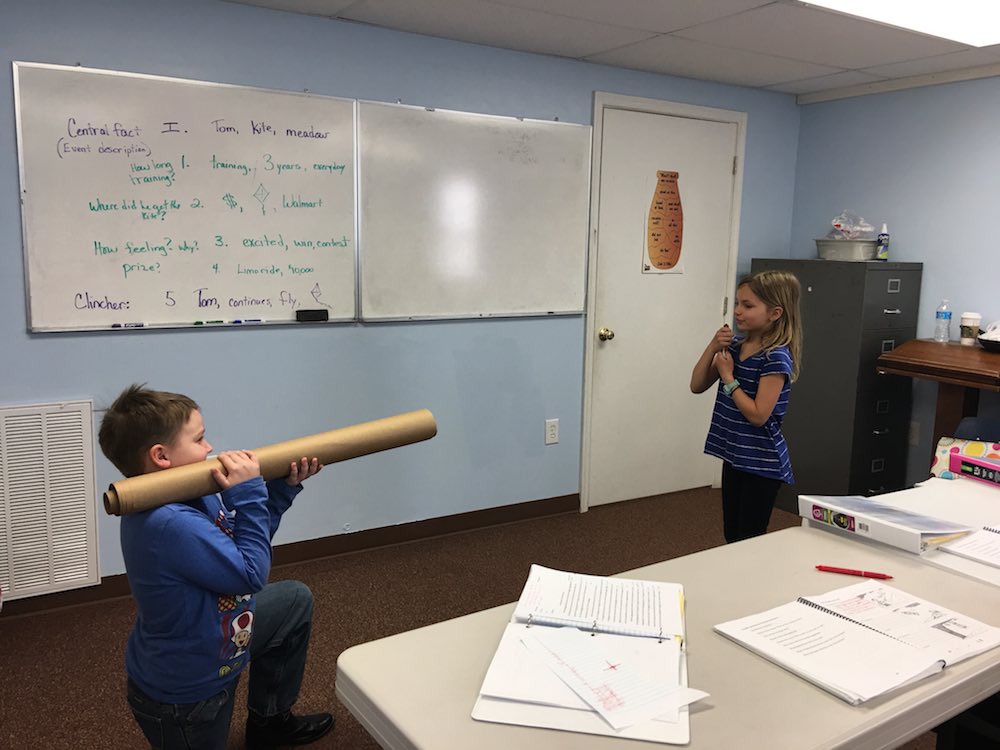 How is he feeling as the contest begins? Is there a prize if he wins? There were also questions about the weather, his clothes, his hair, the lack of birds, and the short kite string. When we were all finished outlining, the students took turns testing our outline by pretending to be the reporter, holding a wipe-off marker as the microphone. A roll of butcher paper in the corner was quickly lifted to a student’s shoulder and became our news camera. Of course we had to get past the rocket launcher conversation, demonstrations, and laughter first. Eventually they each took their role of news reporter very seriously as they relayed the event description to the viewers at home. In the end, all of the students were very excited about interrogative thinking and the creative possibilities that result from asking questions.
How is he feeling as the contest begins? Is there a prize if he wins? There were also questions about the weather, his clothes, his hair, the lack of birds, and the short kite string. When we were all finished outlining, the students took turns testing our outline by pretending to be the reporter, holding a wipe-off marker as the microphone. A roll of butcher paper in the corner was quickly lifted to a student’s shoulder and became our news camera. Of course we had to get past the rocket launcher conversation, demonstrations, and laughter first. Eventually they each took their role of news reporter very seriously as they relayed the event description to the viewers at home. In the end, all of the students were very excited about interrogative thinking and the creative possibilities that result from asking questions.
After class that evening, I received a text from a mom confirming a comment from her daughter and a friend. Two students had asked if they could film themselves being reporters. I gave an enthusiastic yes, but admittedly was not expecting much to come of it. This is what they brought to class on a cell phone the next week:
Interrogative thinking opens up the opportunity to combine event (fact-based) reporting with creativity, and Unit 5 is the perfect place to teach this. As you encounter it in your year, I hope you find it as enjoyable and exciting as I do. Have fun with it! Perhaps you will also cultivate a future reporter or investigator in the process!
|
Laura Bettis is a Certified IEW Instructor and has been teaching with the Structure and Style method since 2008. Homeschooling since 2001, Laura teaches various classes with her local homeschool group, hosts book discussion, evaluates student papers via email, and she is looking forward with bittersweet anticipation to her youngest finishing his high school years. She loves helping parents and students understand and implement the IEW program.Laura lives in King George, Virginia, with her husband, Craig, and their three boys, Jeremy, Kyle, and Joey. |

